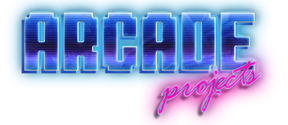hatmoose
Enlightened
The CPS3 CD-ROM drive issue is pretty much a solved problem now with the availability of the awesome UltraSIMMS.
But if you are like me, and just love making cool stuff, then maybe there is still a place for a device that emulates the CPS3 CD-ROM drive.
Lots has been written here
https://www.arcade-projects.com/thr...-scsi-sd-card-adapter.300/page-38#post-350717
and here
https://www.arcade-projects.com/threads/bluescsi-scsi2sd-alternative.18121/
In the past SCSI2SD was the preferred solution, these are quite expensive, keeps adding new features that sometimes break old features (the CPS3 has been feature complete for decades) and is now closed source.
More recently, thanks to the awesome work that @xodaraP has done with the community it looks like BlueSCSI is our hero solution in this space. Works with CPS3, is low cost, is easy to set up, is open source.
So in this thread I shall build and test some BlueSCSI boards for use with my (absurdly huge) CPS3 collection.
The BlueSCSI landing page is here
https://github.com/erichelgeson/BlueSCSI
For our purposes we will be wanting the "1.1-a Desktop" version and following the assembly instructions here
https://github.com/erichelgeson/BlueSCSI/wiki/BlueSCSI-1.1-Desktop-Assembly
But if you are like me, and just love making cool stuff, then maybe there is still a place for a device that emulates the CPS3 CD-ROM drive.
Lots has been written here
https://www.arcade-projects.com/thr...-scsi-sd-card-adapter.300/page-38#post-350717
and here
https://www.arcade-projects.com/threads/bluescsi-scsi2sd-alternative.18121/
In the past SCSI2SD was the preferred solution, these are quite expensive, keeps adding new features that sometimes break old features (the CPS3 has been feature complete for decades) and is now closed source.
More recently, thanks to the awesome work that @xodaraP has done with the community it looks like BlueSCSI is our hero solution in this space. Works with CPS3, is low cost, is easy to set up, is open source.
So in this thread I shall build and test some BlueSCSI boards for use with my (absurdly huge) CPS3 collection.
The BlueSCSI landing page is here
https://github.com/erichelgeson/BlueSCSI
For our purposes we will be wanting the "1.1-a Desktop" version and following the assembly instructions here
https://github.com/erichelgeson/BlueSCSI/wiki/BlueSCSI-1.1-Desktop-Assembly




